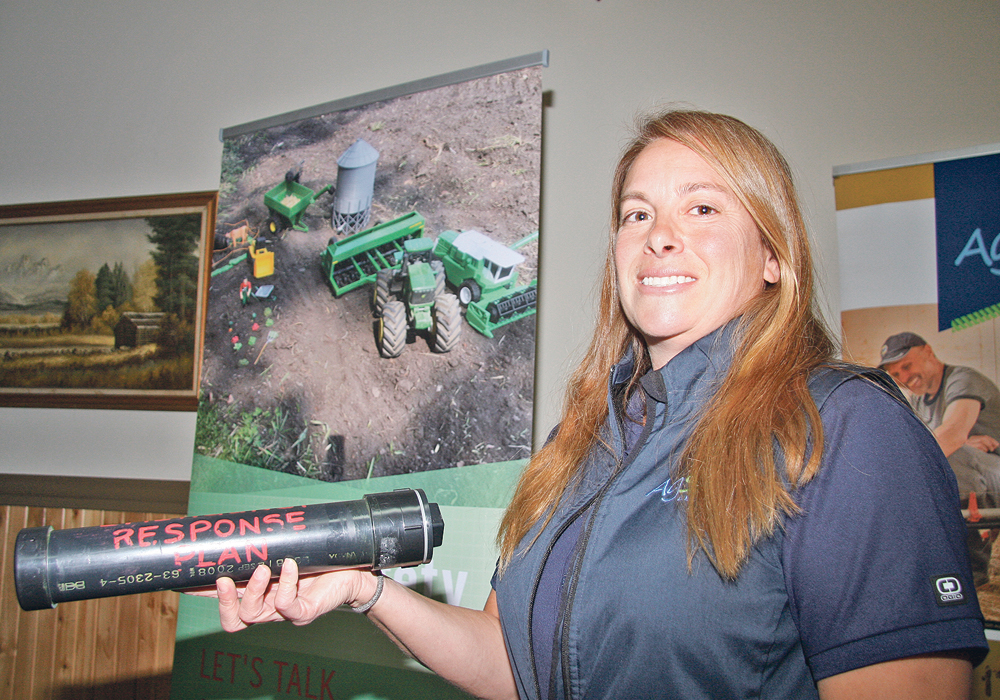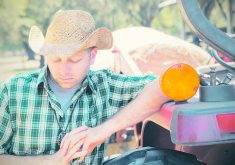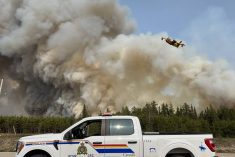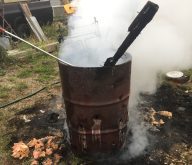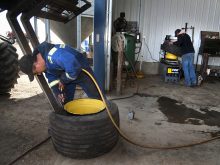Every farm is different, but there are key goals that are required to keep family and others safe and prevent accidents
ROCKY MOUNTAIN HOUSE, Alta. — Everything can be a risk on the farm but too often taking a shortcut results in life-changing injuries.
For the last few years in Alberta, 18 people have died in farm accidents, said Maria Champagne of AgSafe. A first responder who also lives on a farm, Champagne offers advice to farmers through the industry-supported group that will soon become the Agriculture Safety Association of Alberta.
“Farm safety is not a new concept. It has been around a very long time. It is just now there are some legislative procedures that require some producers to have things in place and for others it is just a choice,” she said at recent session sponsored by the Rocky Mountain House agriculture society in west-central Alberta.
Read Also

Nutritious pork packed with vitamins, essential minerals
Recipes for pork
The goal is to keep everyone safe on the farm. The organization can send someone to a farm to walk the premises and point out potential hazards and if requested, draw up a safety plan.
Every farm is different but there are key goals everyone should have to keep family and others safe, prevent accidents and meet legislative requirements.
More than half of farm injuries happen to owners who take on dangerous tasks because they don’t want anyone else at risk, she said.
Every farm should have safety rules like speed limits, out of bounds areas or no smoking in the barn, for example.
A lot of people think a written plan can be overwhelming but many already meet requirements by doing equipment checks, regular maintenance or wearing protective gear like safety glasses or gloves.
When an accident happens, emergency responders can take a long time to reach a victim in a rural area if they can’t find the place.
Land locations and addresses should be written down. If a neighbour has to call for help, chances are that person does not know the location or address.
“People in those stressful moments mess up numbers or forget numbers,” she said.
Fields, pastures or other spots should be identified.
Cellphones help pinpoint locations or send texts for help but many rural areas are dead zones and phones do not work.
If the farm has a sign with a number and road name, make sure it can be read.
Farmers also need to think of what kind of emergency can happen.
Wildfires are becoming more common across the West. People or livestock may need to be evacuated and a plan is needed to do that safely.
Someone on the farm should have first-aid training because help could be far away. Tools on the farm should include a first aid kit, eye wash stations and a fire extinguisher. Make sure the extinguisher works and that people know how to use them.
Also consider what people are comfortable doing in the event of an emergency. Some may be able to do first aid while someone else should get the ambulance.
“If something happens, what would you want people to do so they respond appropriately?” she said.
Champagne recommends drawing a diagram of the farm to show water sources, sheds, where chemicals or fuel are stored, as well as shut-off switches for gas or power lines.
People should also make sure that emergency phone numbers are up to date.
Champagne recommends getting a large PVC tube with a screw-on cap with an O-ring to keep water out. It can be filled with the farm diagram and other emergency information and placed in a prominent place so crews can find it.
For more information and to reach AgSafe, visit www.agsafeab.ca or call 833-924-7233




